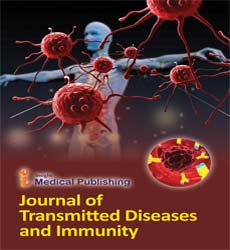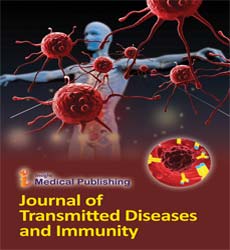ISSN : 2573-0320
Journal of Transmitted Diseases and Immunity
An Instigation On Vaccination - History
Musie Ghebremichael*
Harvard Medical School and Ragon Institute of Harvard MGH and MIT, USA
- *Corresponding Author:
- Musie Ghebremichael
Harvard Medical School and Ragon Institute of Harvard MGH and MIT, USA
E-mail: musieghebremichael56@gmail.com
Received Date: May 03, 2021; Accepted Date: May 10, 2021; Published Date: May 17, 2021
Citation: Ghebremichael (2021) An Instigation on Vaccination – History. J Transm Dis Immun. Vol.5 No.3:35
Vaccinations are one among the only most impactive developments in modern medicine and remain a critical measure to stop common infections that when plagued humanity. Given the widespread use of, and in some scenarios country-mandated, vaccinations among all age groups, sexes, and ethnicities, the edge for tolerance of vaccine-associated adverse drug reactions is low. Many vaccinations are performed on a yearly basis which will contribute to the generation of safety data signals and what could also be considered a better frequency of adverse reactions. Regardless, the benefit outweighs a coffee likelihood of adverse reactions in most scenarios, except perhaps in specialized populations at highest risk for vaccine-related complications. Post-marketing monitoring of adverse events after vaccinations is an important measure to spot potential vaccine reaction trends, increase patient safety, and identify areas where vaccine-safety research is warranted.
In spite of the proof of wellbeing gains from vaccination programs there has consistently been protection from antibodies in certain gatherings. The last part of the 1970s and 1980s denoted a time of speeding up prosecution and diminished benefit for antibody make, which prompted a decrease inside the quantity of organizations delivering immunizations. The decline was arrested partially by the implementation of the National Vaccine Injury Compensation programme within the US in 1986. The legacy of this era lives on to this day in supply crises and continued media efforts by a growing vociferous anti-vaccination lobby.
Vaccine-preventable diseases are those diseases that there's an attempt that helps the system steel oneself against an infection. An individual develops immunity after he or she has received a vaccine and skilled it. When a vaccinated person is exposed to an epidemic (for example, hepatitis B) or bacteria (for example, diphtheria), his or her body is in a position to destroy the virus or bacteria and stop the disease. No vaccine is ideal, and a few people that receive a vaccine can still get the disease. This is often why it's important for everybody to urge the vaccine. This provides the community what experts call "herd" immunity and means, basically, there are only a few people that could function a reservoir for the disease. Herd immunity prevents severe outbreaks of diseases.
Thereto end, researchers have devised differing types of vaccines. A weakened or attenuated, vaccine contains microorganisms that have lost the power to cause serious illness but retain the power to stimulate immunity. They’ll produce a light or subclinical sort of the disease. Attenuated vaccines include those for measles, mumps, polio (the Sabin vaccine), rubella, and tuberculosis. Inactivated vaccines are people who contain organisms that are killed or inactivated with heat or chemicals. Inactivated vaccines elicit an immune reaction, but the response often is a smaller amount complete than with attenuated vaccines. Because inactivated vaccines aren't as effective at fighting infection as those made up of attenuated microorganisms, greater quantities of inactivated vaccines are administered. Vaccines against rabies, polio (the Salk vaccine), some sorts of influenza, and cholera are made up of inactivated microorganisms. Another sort of vaccine may be a subunit vaccine, which is formed from proteins found on the surface of infectious agents. Immunizations for flu and hepatitis B are of that kind. At the point when poisons, the metabolic side-effects of irresistible organic entities, are inactivated to make pathogens, they will be wont to animate resistance against lockjaw, diphtheria, and (pertussis).

Open Access Journals
- Aquaculture & Veterinary Science
- Chemistry & Chemical Sciences
- Clinical Sciences
- Engineering
- General Science
- Genetics & Molecular Biology
- Health Care & Nursing
- Immunology & Microbiology
- Materials Science
- Mathematics & Physics
- Medical Sciences
- Neurology & Psychiatry
- Oncology & Cancer Science
- Pharmaceutical Sciences
